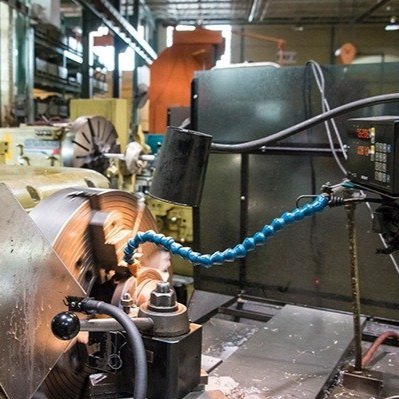Reliability Efforts Provide 40% Production Boost for EPS Foam Manufacturer
/Styrotek manufactures a unique expanded-polystyrene container that keeps California table grapes fresh for shipping to grocery stores worldwide.
By Michelle Segrest, Navigate Content, Inc—Reporting for Maintenance Technology
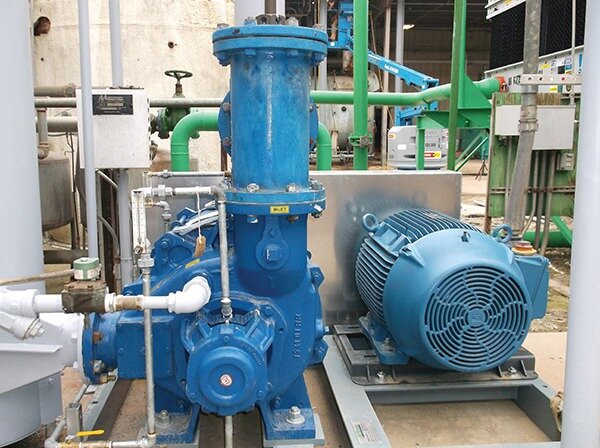
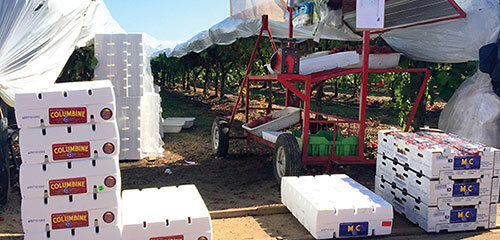


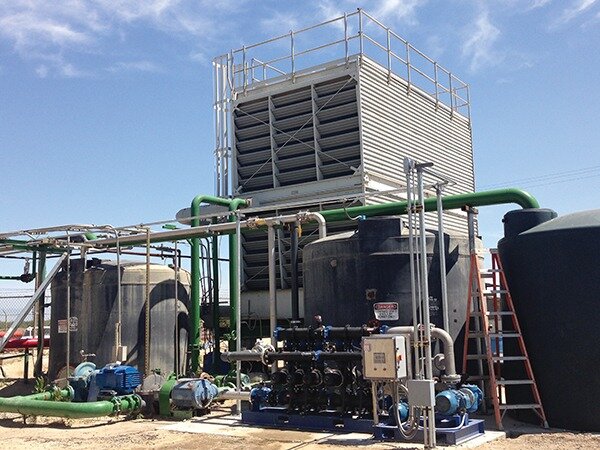
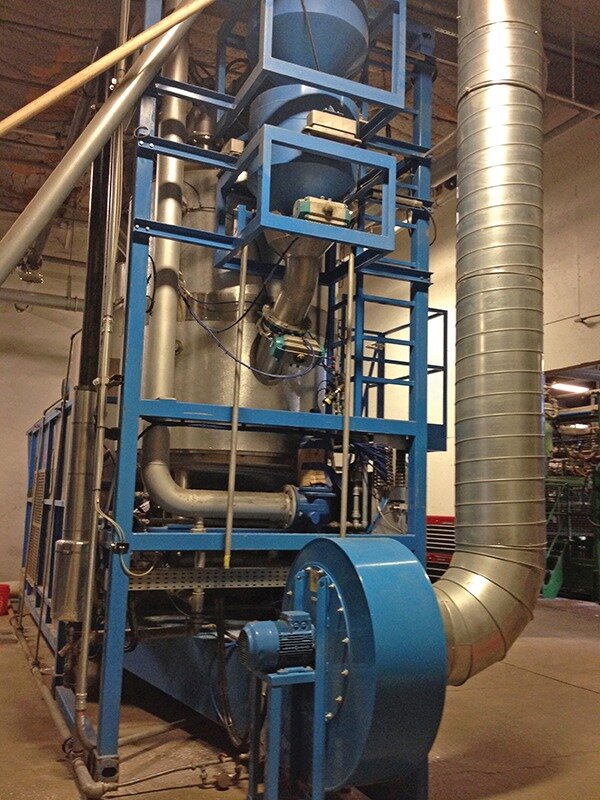
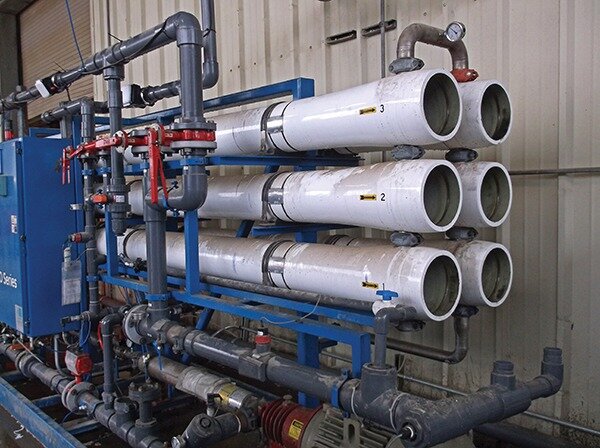

It takes a special product and a fresh process to transport the more than 80 varieties of sweet, delicious, colorful grapes from 800,000 acres of California grape farmland to grocery shelves around the world. Styrotek makes this happen from its 38-acre manufacturing facility in Delano, California.
Four decades ago, grape farmers shipped their wire-wrapped products in cardboard and wooden boxes. In 1973, California’s Central Valley grape growers developed an idea for an expanded polystyrene (EPS) produce container to protect this precious fruit, prolong its storage time, and enhance its appearance in domestic and international markets. Ventilation holes allow the grapes to cool while the foam material insulates them from high temperatures, reduces moisture loss, and prevents bacterial growth. This inspiration for a better shipping product was the foundation for Styrotek.
More than 99% of grapes commercially grown in the United States come from California and are available in three colors—green, red, and black—produced May through January. Grapes are big business. During the 2014-15 season, California’s table-grape growers harvested their second largest crop ever, sending 110 million 19-lb. boxes of grapes to more than 65 countries. This set a new record for crop value at $1.76 billion.
To keep up with the market and consumer demand, Styrotek (one of only two U.S. manufacturers of grape shipping containers) had to make substantial improvements in its maintenance and operation efficiencies to produce 40 million of the 110 million boxes used last year.
Well Water Makes a Difference in EPS Foam Production
In early 2015, California was experiencing a severe drought, which is ongoing. Styrotek had shut down the water process it had used since 1973—snow and rain runoff water from the canals. The drought translated to limited supply and virtually no access to this water. Styrotek shifted to well water, but the shift in the water chemistry caused 35,000 to 40,000 gal. of wasted water per day, an unacceptable proposition during a drought.
The company hired interim CEO Richard Lindenmuth to make sustainable transformations.
“The company was at a point where it would basically have to shut down operations,” Lindenmuth said. “But someone like me does not come in and just say, ‘This is what we are going to do.’ These guys have been doing things correctly since 1973, so I got together with the production supervisor and five other people and talked about what had been done in the past, what were the things that were most critical, and how to establish some priorities. They had some good ideas but didn’t have the resources.”
Lindenmuth, corporate support, and the experienced production team came together to find solutions.
Production supervisor Adan Velazquez and his team developed a plan that Lindenmuth helped implement. “No one here had ever seen a water problem like this before. But I grew up ranching and farming, so I knew there was equipment that could be put on a flatbed trailer and trucked in and plugged into the system. We could use this as a rental system for a while,” Lindenmuth said.
To put the plan into effect, the plant made a bold decision to shut down just eight weeks before the grape harvest season. “We obviously could have been out of business,” Lindenmuth said. “So we trucked in some equipment from Tennessee, put it on a flatbed trailer, and plugged it in. Eventually we bought that equipment, refined it, and added RTOs (regenerative thermal oxidizers).”
Within three months, Styrotek began to experience record months of production, high quality, and low scrap.
This led to an intense culture of preventive and proactive maintenance.
“We zoned in on a philosophy that no machine was allowed to go down,” Lindenmuth said. “Let’s fix it before there are problems with it. It’s been a constant process of improvement since then. We talk about what can be done. We’ve organized so that we have somebody responsible for molds, another person responsible for machines, another for water systems, constant measurements, and tracking vacuum pressure.”
Lindenmuth made operational and cultural adjustments. The biggest impact involved the switch from using chemically treated municipal water to natural well water for manufacturing operations. This change resulted in improvements in quality and considerable reduction in consumption and waste—things that were particularly important amid the region’s ongoing drought conditions.
Water in the facility is treated with softeners and a reverse-osmosis (RO) system. The water that is rejected is recycled. Styrotek transformed usage from 35,000 gal. of wasted water each day to roughly 50 gal. of recycled water per week.
In one year, Styrotek has increased production capacity by 40%, using more than 85% of the extra capacity to fill customer product orders during strong table-grape harvest seasons.
Currently, its production allows the company to process as much as 32 million pounds of EPS resin a year. Since the current production volume only uses approximately 20 million pounds of resin, this puts Styrotek in a position to seek strategic alliances with industry partners interested in tapping into that additional capacity to produce other EPS products.
From Field to Table—Grape Production in California
There are roughly 20 to 25 major table-grape growers in the Coachella and San Joaquin Valleys, and more than 100 farms in California. The EPS boxes produced by Styrotek are shipped directly to the growers. When the grapes are harvested, they are immediately placed in the EPS containers and quickly shipped in truckloads to refrigerated warehouses where they are kept cool until shipped to grocery stores.
“For every hour the grapes are delayed in pre-cooling, they lose one day of shelf life,” Lindenmuth said.
The containers are vented so there is cool air flowing through them all the time. The foam acts as insulation and retains the cool air inside the package. The standard Styrotek EPS box measures 16 x 24 in. and holds 16 to 23 pounds of grapes.
Maintenance Philosophy & Manufacturing Best Practices
Styrotek maintains 38 molding machines that operate in three shifts year-round in two facilities at the Delano site. These machines use hydraulic energy, pneumatics, electrical systems, and steam. The components include valves, motors, hoses, pumps, vacuum systems, accumulators, a 700-hp boiler, and a 400-hp boiler. Much of the equipment is original from when the company opened in 1973, but many upgrades have been made.
“Good maintenance is obviously something that is important in keeping our plant running 24/7,” Velazquez said. “We have implemented a few upgrades so we are much more effective. We added economizers to our boilers, and the upgrades in the vacuum system save energy and help us be more productive.”
The 20-member maintenance team stays busy with regular daily, weekly, monthly, and quarterly maintenance and quality checks. Serious issues are addressed immediately.
Because Styrotek was established by grape growers, it originally operated only during the growing season and was shut down during the harvest. “You can imagine what this could do to maintenance programs in manufacturing,” Lindenmuth said. “Last year, we took an extended shutdown and got everything back in tip-top shape. Now we are running 365 days a year, 24/7 with only minor scheduled shutdowns.”
A strict preventive philosophy drives the maintenance program, Velazquez said. “Our idea of maintenance is not allowing our machines to break in the first place. We keep documents of all the checks. For example, we monitor the hydraulic, steam, air, and water pressures daily. We have recently begun making these checks every shift. We monitor them continuously and, when we notice there is an issue with one of them, we immediately shut it down and repair it.”
The shift from a reactionary to a preventive culture translates to even the smallest details. “The resins that create the EPS to form the product, and the steam, are both materials that can produce waste,” Lindenmuth said. “We consider water on the floor or resins on the floor to be shameful. They belong in the molds and in the products. We try not to have any leaks, which is difficult in a high-pressure hydraulic vacuum system. We address those issues very quickly.”
Shutdowns have become rare rather than a normal occurrence, said Velazquez, who has been with the company 10 years. “In the past, we were running each machine about 21 to 22 hours a day, and we would have to shut down constantly. Today, we are able to run machines for 23.5 hours, and we only have to shut down a machine to change the filters.
“I remember when I first started working here the philosophy was reactionary. If it breaks down, fix it. If it doesn’t, don’t touch it. There were never any equipment upgrades until this management came along. What we did in the past was basically work with what we had and, if we could weld it back into shape, good. If not, then it was going to run that way. It was really a bad practice because we started losing some customers based on the fact that we were making a less desirable product. Since this management came along, we have made several improvements that have allowed us to compete again and made us a lot more effective.”
One Styrotek crew can produce an average of 9,400 to 10,000 boxes in one shift, or approximately 1,250 boxes/hr. Last season, the company set a record for 700,000 boxes produced in a week.
Operational Improvements Drive Manufacturing Success
Styrotek hired Lindenmuth in the spring of 2015 to drive the company’s operational improvements. His experience included working for corporations on a temporary basis to implement huge, sustainable changes. Velazquez can see the difference.
“I only have positive things to say,” he said. “We’ve seen a very huge change in the way people view work and their daily experience here at Styrotek. This management has listened to us and paid attention to what we really need to do our jobs better and produce a better-quality product. And then they were given the resources to make the changes happen. For example, we obviously have a vacuum system, a water system, a hydraulic system, and a steam system. We now have a new vacuum pump, which gave us additional vacuum power. We went from having 11 inches of mercury to now having 19 to 21 inches. We usually maintain air pressure at around 60 to 70 pounds per square inch (psi), and we added a new compressor and upgraded the old ones. We now can maintain 100 psi with no problem. We acquired a new reverse-osmosis unit that’s capable of running our entire system at about 75 gpm, and more if we need it. That improvement keeps our motors from being scaled. It improves our cooling system and our steam process. We got an economizer in the boilers, a new aerator tank, and aerator system.”
The quality control program has also improved.
“In an effort to keep our customers satisfied, we have appointed one person to be the lead of the quality program,” Velazquez said. “She monitors the quality checks on the various shifts. This adds to the consistency of our product.”
The operations improvements have also affected the company’s conservation efforts.
“We would previously grind the scrap,” Lindenmuth said. “The material that doesn’t pass quality is actually still pretty good, so we would regrind it and mix it in with the other resins. We stopped regrinding and now put the material through a recycling machine. We are actually recycling 100% of our scraps and getting paid for it. And our machine time has increased substantially, which pays for all of that scrap. It’s really been fun as a team to put some of these new processes in place.”
The EPS material is not Styrofoam (a term copyrighted by Dow). It is 100% recyclable.
“There are similarities because there is styrene in these products, but expandable polystyrene is truly 100% recyclable,” Lindenmuth said. “It is conceivable that someone could produce the grapes, ship them to the stores, keep them in refrigeration, and then recycle the product in the distribution centers and actually receive money back at the end of the day from recyclers that would sell their recycled polystyrene.”
Lindenmuth credits the company’s employees and their commitment to the new program as the main reason for all of the substantial improvements.
“Our employees are very important to us, and they really rallied with this team spirit,” he said. “We have also teamed up with our outside people. We communicate with our boiler reps, chemical water treatment, and well partners. We are part of this community, so it is important to maximize the product shelf life, as well as be 100% recyclable. All of this leads to sustainability.”
Other Uses for EPS Foam
As a company, Styrotek is spearheading a study to investigate other uses for EPS. “There is some confusion about this material going to a landfill and not being organic or biodegradable,” said Lindenmuth. “We are going to do a study with a recognized university to document how long this expands the life of the products and how easy it is to recycle. We are going to work with recyclers and stores like Whole Foods and HEB, who are actually real customers of the products.”
In addition, the study will explore other uses for EPS. Currently, Styrotek only produces containers to transport table grapes.
“The grape market is not going to grow 30% in the next couple of years, so we may very well expand,” Lindenmuth said. “The study will help to determine whether our product will work for other types of produce.”
EPS has been used for a wide range of products, including bicycle and motorcycle helmets, insulation for commercial office buildings, and even to sculpt a life-sized whale for an aquarium exhibit.
Michelle Segrest is President of Navigate Content, Inc., a full-service content creation firm. She has been a journalist for more than three decades and specializes in covering the people and processes that make a difference in the industrial processing industries. Contact her at michelle@navigatecontent.com
If you like this article about EPS foam manufacturing, please PIN IT!
Originally published in Maintenance Technology, May 2016. Updated October 2019








